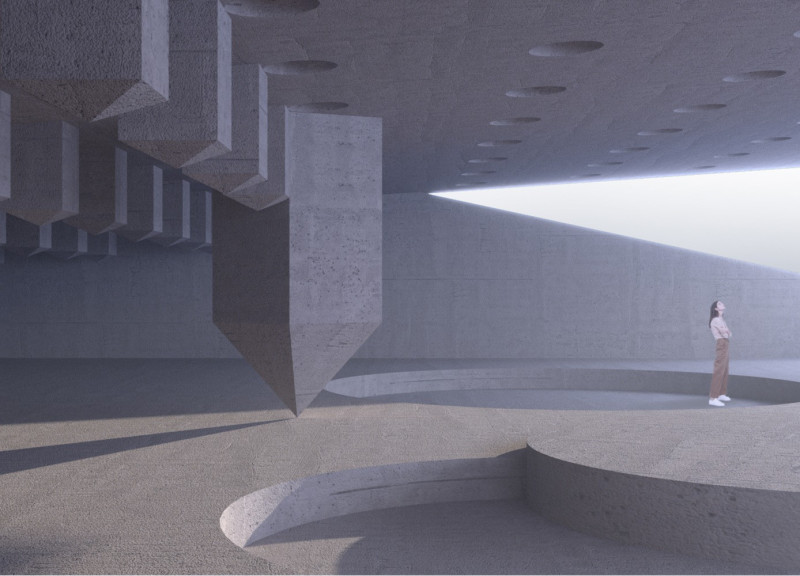5 key facts about this project
The design located in Scotland centers on the history of the 16th-century witch hunts, exploring the connection between state power and religious authority. The intention is to honor those who suffered persecution while provoking thoughtful engagement with themes of power, gender, and social order. The design emphasizes movement and spatial arrangement, guiding visitors through a journey related to the site's significant past.
Concept and Circulation
The design prioritizes circulation, creating pathways that allow visitors to navigate their way through the historical narrative. These routes are carefully crafted to reflect the journeys of those who experienced persecution, creating an immersive experience. This strategy not only meets practical needs but also fosters a deeper emotional connection to the events that shaped the region's history.
Interplay of Authority
The layout demonstrates how the state and church worked together, showcasing the complexities of their relationship during the witch hunts. Different spaces within the design represent various societal roles, emphasizing divisions that existed and the control mechanisms at play. This organization helps to illustrate how authority structures influenced behaviors and perceptions in society at the time.
Historical Resonance
The architecture speaks to the impact of collective actions on marginalized communities, particularly women. By highlighting themes of political initiative, the design invites reflection on resilience in the face of oppression. The narrative encourages visitors to think critically about historical injustices and how they continue to affect contemporary society.
Lighting and Atmosphere
Strategically placed lighting and reflective surfaces enhance the sensory experience of the project. The way light interacts with different elements creates a varied atmosphere, inviting quiet contemplation. This focus on atmospheric detail adds depth and reinforces the themes of the site, ensuring a thoughtful engagement with the history represented.



















































